Prayer plants have gorgeous, patterned leaves. They are also sensitive to their growing conditions and known to be a bit fussy.
While the occasional brown leaf tip is to be expected, if your houseplant is making this a habit, it might be a cry for help.
In this article I’m going to discuss some of the most likely causes of brown leaves on prayer plants, so that you can come to your beloved plant’s assistance – and answer its prayers, so to speak.
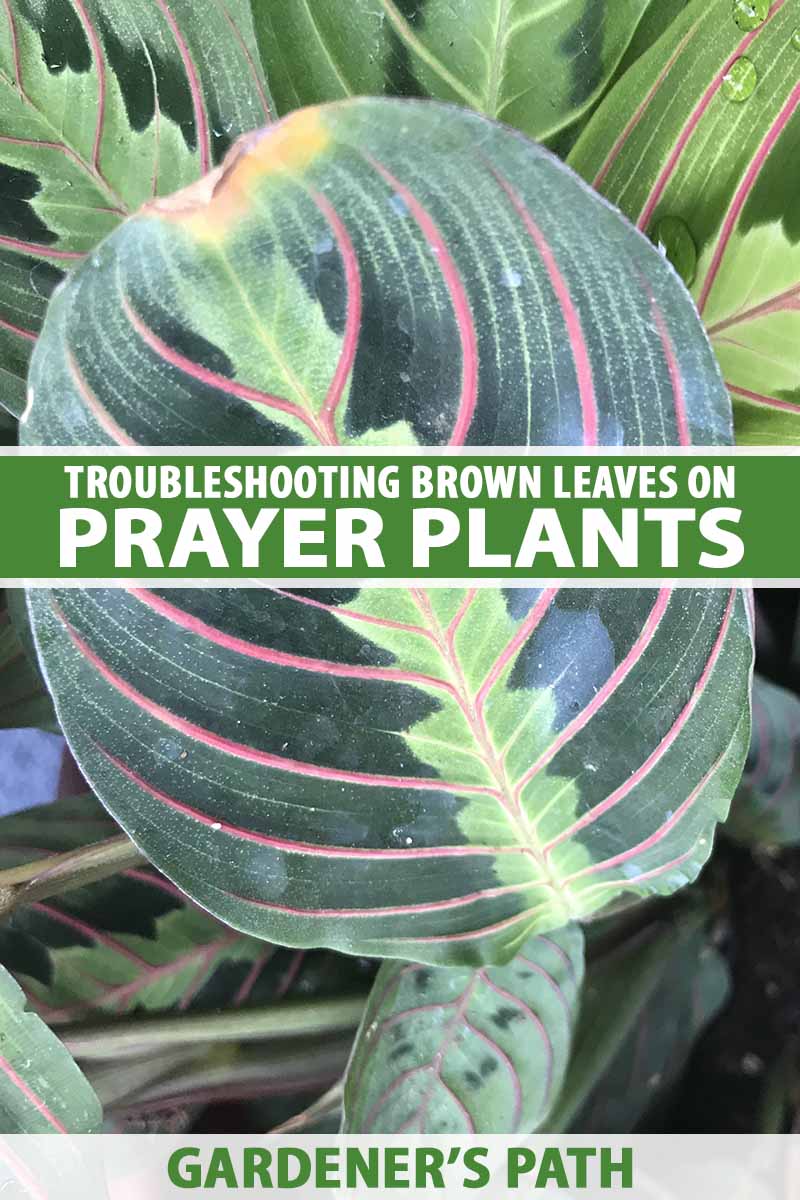
We link to vendors to help you find relevant products. If you buy from one of our links, we may earn a commission.
And when I say “prayer plant,” I mean all the species grown as houseplants that are part of the Marantaceae family and that go by this common name, including marantas, calatheas (renamed and officially known as goeppertias), ctenanthes, and stromanthes.
Here’s what I’ll cover:
What You’ll Learn
7 Common Reasons for Brown Leaves in Prayer Plants
When you bring a prayer plant into your home, you’re probably hoping to enjoy the visual delights of its gorgeous foliage. So it’s no fun to see those wonderfully patterned leaves turning brown at the tips or edges.
Let’s look at some of the most common reasons why brown leaves can pop up in these tropical houseplants, so you can keep them looking verdantly fresh, with their leaves untarnished.
1. Too Little Soil Moisture
If your prayer plant has brown tips or leaf margins and you are not watering very frequently, too little moisture could be the problem.
The members of the Marantaceae family like to have moist – but not soggy or waterlogged – soil. While many houseplants do better with a bit of neglect in order to prevent overwatering, this is not the case with these species.
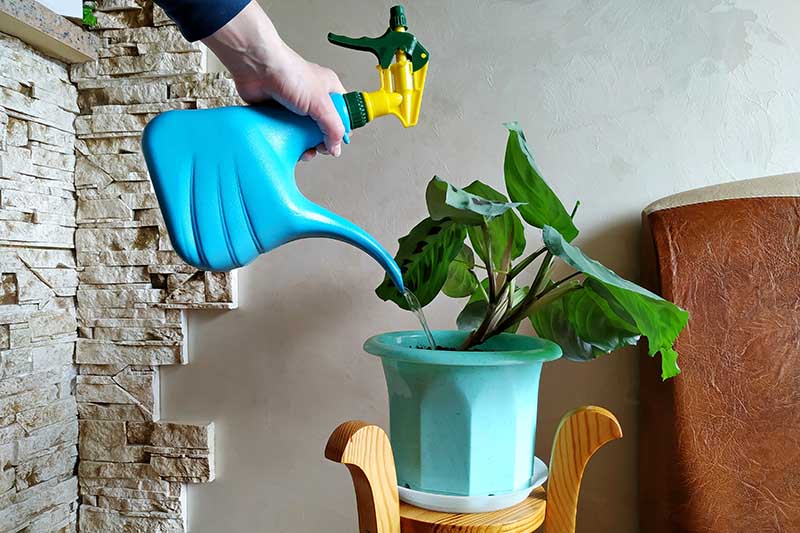
Depending on the conditions in your home, you may need to water as often as twice a week – and you should certainly check on them at least that often.
If you’re already watering twice a week or more, it may be that it’s time to repot your plant, or that the soil is simply not holding enough moisture to meet its needs.
Examine your houseplant in its pot. Are there roots emerging from the holes at the bottom, or creeping out of the soil at the top of the pot?
If so, your maranta, calathea, stromanthe, or ctenanthe is probably getting rootbound, and it’s time to repot.
If being rootbound doesn’t seem to be a problem but your plant does seem to be drying out too quickly, examine the potting medium. Does it look like typical houseplant potting soil?
If so, this may be part of the problem.
These species require a rich, peaty potting medium to help them retain moisture. For added moisture retention, you may want to add some coconut coir to your potting mix.
Unlike peat moss, coconut coir is a more sustainable, renewable resource that has the same moisture-retaining and slightly acidic qualities as peat moss.
Prococo Compressed Coconut Coir Chips-N-Fiber in 10 Lb. Block
You’ll find coconut coir in a compressed ten-pound block available for purchase from Arbico Organics.
2. Uneven Watering
Another moisture-related problem that is slightly more nuanced is uneven watering.
Are you noticing brown tips on just part of the plant’s foliage?

It may be possible that the surface of the soil is not getting evenly wet when you tend to your houseplant.
To remedy this problem, make sure to water all around the surface of the soil until liquid runs out of the drainage holes.
This will prevent crispy edges from developing on just one side of your houseplant.
3. Impurities in Water
Yet another issue related to your watering routine may be impurities introduced via your water source.
Are you providing your prayer plants with municipal tap water? This usually contains fluoride, chlorine, and other chemicals which can negatively affect your plant, causing leaf tips or edges to turn brown.
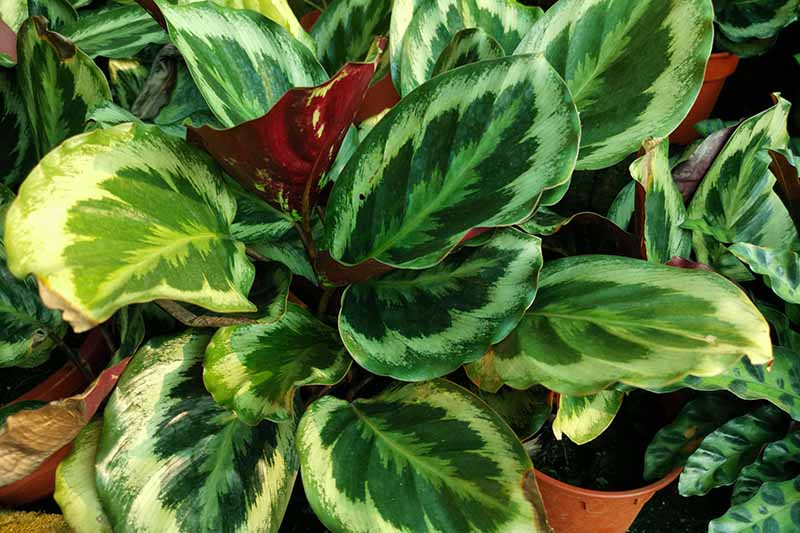
If you think you’re safe because you’re using well water, this may not be the case. Minerals in well water can also be problematic for these sensitive houseplants.
To keep them as healthy as possible, use rainwater, filtered tap water, or distilled water when you tend to them.
4. Buildup of Fertilizer Salts
When you fertilize your maranta, ctenanthe, stromanthe, or calathea, fertilizer salts often tend to build up in the potting soil.
As discussed in the last section, these species are fairly sensitive to salt and mineral buildup. And fertilizer salts can actually compete with your houseplant’s roots for moisture, causing it to suffer dehydration, which often shows up as tip burn or brown leaves.
To remedy this problem, adjust your fertilizer routine, making sure you dilute liquid fertilizer heavily.
And every few months, plan to take a few minutes to leach those fertilizer salts out of the soil.
Here’s how:
When it’s time to water, instead of going about your normal routine, give your houseplant three generous drenchings one after the other, using fresh water each time, and letting the liquid drain out of the pot’s drainage holes.
This should help to wash out any fertilizer salt deposits that have built up in the potting medium.
5. Lack of Humidity
As natives of the wet tropics, Marantaceae species like to live life on the humid side. When plant parents ignore their babies’ requirement for an environment with high relative humidity, brown leaf edges often appear.
These houseplants need to be kept in conditions with a relative humidity of around 40 to 60 percent.
Even if you live in a climate where the summer days are humid, in the winter your home may be much drier, with your heating system blowing hot air around your home.
To keep humidity levels up, you have a few options – and you may need to employ more than one of them, depending on the conditions in your home.

First, situate your prayer plant among other houseplants, in a group, which will in itself keep the humidity higher around each specimen.
You can also mist them daily with a spray bottle. Use the fine mist setting on the spray bottle if it is adjustable, to humidify the foliage with a fine spray.
And just as you would when watering at the soil level, use filtered or distilled water, or fresh rainwater.
Be careful to mist your plants only in the morning, so that any moisture on the leaves has time to dry out before the temperatures cool at night.
Fungi and bacteria are more likely to get a foothold when conditions are dark and damp as opposed to sunny and damp.

Another tactic you can use to increase the humidity around your Marantaceae species is to place open containers of water under their leaves, so that when the moisture evaporates, it helps to humidify the air.
I put teacups full of water under my smaller calatheas, just as I do with my orchids. This gives me a chance to put my large collection of vintage teacups to use where I can admire them, while also adding humidity to the air for my green companions.
A less eclectic alternative to my teacup method is to place your houseplants on a humidity tray.
The plastic tray is filled with water, and the potted houseplants are placed on top of a grid that fits snugly into the rim of the tray. Just as with the teacups, as moisture evaporates from the tray, it transfers to the air around the plants.
If you’d like to invest in one of these trays as a humidity-increasing measure, you can find one that measures 13.5 by 10.5 inches, available from Humidi-Grow, via Amazon.

Humidi-Grow 13.5” x 10.5” Humidity Tray
When using these trays, just make sure that your pots are sitting on the grid but not directly in contact with the water – otherwise, they can wick moisture up through the bottom of their pots and become oversaturated, potentially causing additional problems.
Since I’m growing moisture-loving marantas and calatheas in an arid desert climate, I keep my smaller specimens in a mini greenhouse or terrarium, which helps to hold in the humidity.
The relative humidity in my terrarium stays at around 65 percent, compared with the general relative humidity in my home, which tends to remain below 40 percent.
I have a few mini greenhouses – they help me to keep my houseplants at a higher relative humidity in my dry conditions, and protect them from my curious cats.
Since my maranta is in a hanging basket and is too large to place in one of my mini greenhouses, I supply it with extra humidity with the help of a humidifier.
If you aren’t sure what your indoor relative humidity is but would like to monitor it, you can purchase a small, inexpensive hygrometer, which is a meter used to measure relative humidity.
Just place it near your plants – inside your terrarium if you’re using one – and keep your eye on it to see if you’re keeping the relative humidity above the recommended 40 percent.

Mini Hygrometer and Thermometer
You can purchase a mini hygrometer and thermometer combo from Goabroa via Amazon.
6. Too Much Direct Sun
Another cause of browning leaves among members of the Marantaceae family is too much direct sun.
How much direct sun is your prayer plant getting every day? If it’s receiving a substantial amount, the sun could be scorching its leaves, causing them to brown.
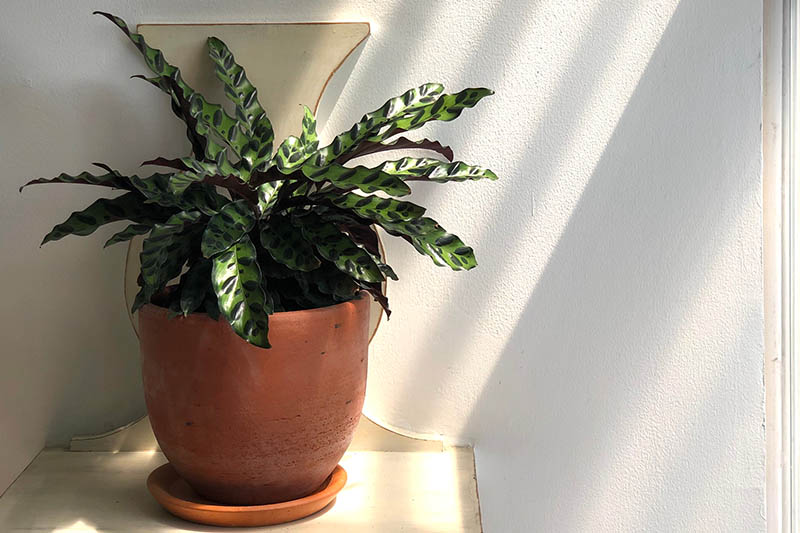
Ideally your marantas, calatheas, ctenanthes, and stromanthes should only be exposed to indirect bright or medium light.
These species are native to tropical rainforests where they live on the forest floor, exposed only to dappled sunlight streaming down through the forest canopy.
That’s why they are good lower-light houseplant options. And this is also why you’ll want to keep them away from bright southern or western windows.
If your prayer plant is currently situated near a bright south or west facing window, move it back several feet.
7. Temperature Extremes
Going hand in hand with too much sun, high temperatures can also cause leaf browning.
You may have your watering routine down and you’ve gotten the light conditions right, but if you place these houseplants near a source of heat that is beyond their comfort zone, you may begin seeing the much-dreaded brown leaf tips.
Along with avoiding windows that let in intense heat from the south or west, you will want to avoid other hot spots in your home.
These include fireplaces (when in use), as well as radiant flooring, nearby stoves, and the tops of refrigerators, as well as radiators and heat registers.
Also be on the lookout for cold drafts, which can cause browning of foliage as well. Avoid placing your prayer plants near exterior doors, drafty windows, or chimneys on exterior walls, which can also bring in cold air.
Members of the Marantaceae family prefer a mild climate in the 65 to 80°F range, and if you can keep them at this temperature steadily, they will reward you with beautiful, bright foliage.
And since yellowing leaves on these houseplants can represent a different range of problems, make sure to read our article on yellow leaves on prayer plants next.
Don’t Let Brown Get You Down
If you can provide your maranta, calathea, ctenanthe, or stromanthe with the conditions outlined here, leaf browning should be kept to a minimum.
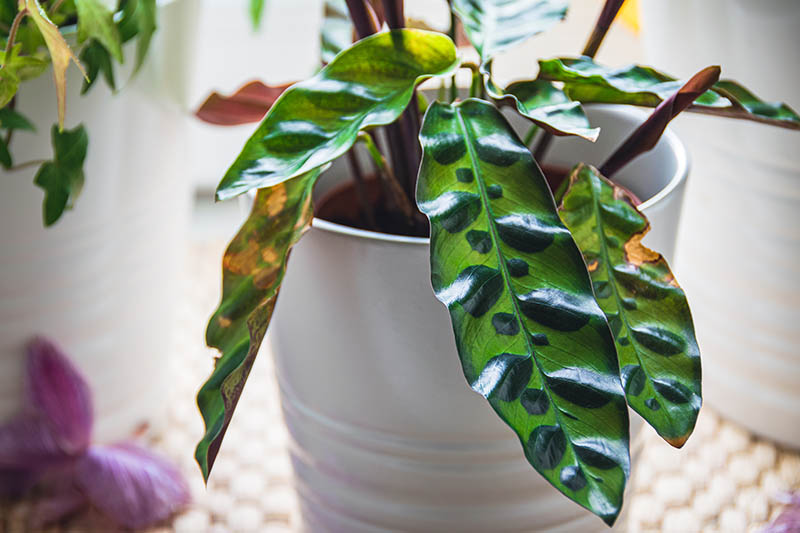
And for further guidance on giving these tropical species the best possible care, including repotting instructions, make sure you review our complete guide to growing prayer plants.
If you aren’t sure what type you have and want to learn more, or if you’re in search of new types to add to your collection, check out our tour of the Marantaceae family in our article on 21 of the most stunning prayer plant varieties you can grow at home.
Are you having an issue with brown leaves on your prayer plants and you’re still not sure what to think? Feel free to share your photos and let us know as much as possible about what’s going on in the comments section below. We’d love to help!
If you have houseplants on your mind and want to keep exploring this topic, here are some more articles that may be of interest:
- Houseplant Primer: A Guide to Basic Care and Durable Plants
- 23 Colorful Houseplants to Warm Up Your Home This Winter
- How to Grow and Care for Spider Plants
© Ask the Experts, LLC. ALL RIGHTS RESERVED. See our TOS for more details. Product photos via Goabroa, Humidi-Grow, Ikea, and Prococo. Uncredited photos: Shutterstock.
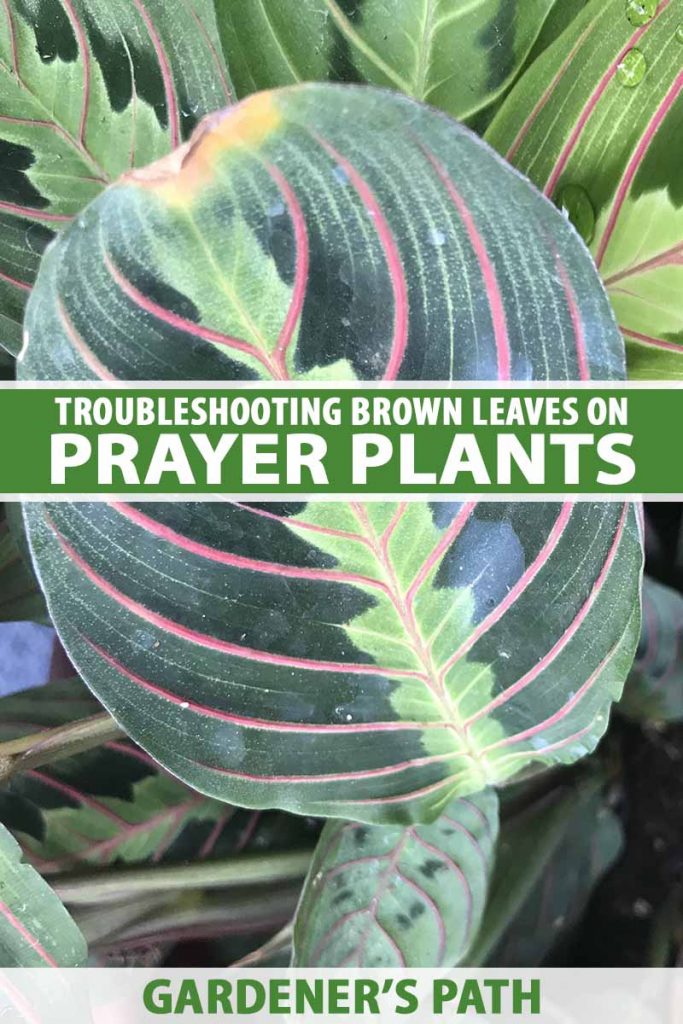
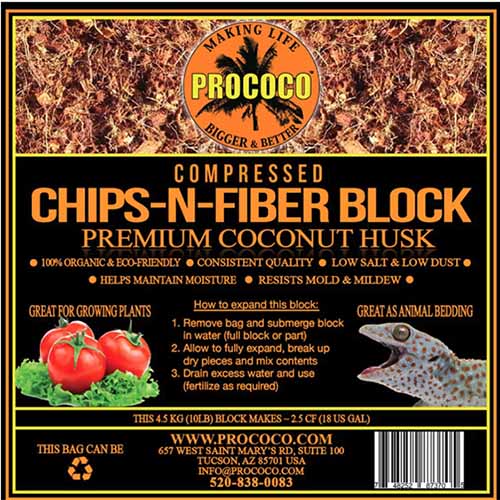
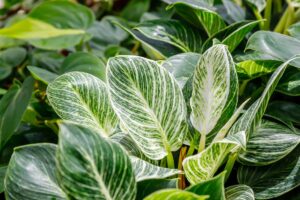
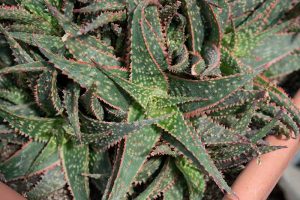
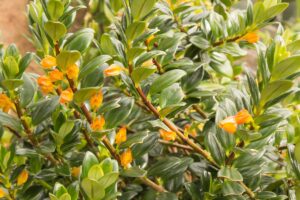
So I have a friend who gave me a propagated prayer plant- it did alright for a while, but then died out and now has two very long stalks and the leaves brown at the edges, even new ones.
I moved it into less direct light, also away from a heating vent, and I use the app Planta to alert me when it’s time to water and mist- the topsoil does not dry completely out. Any tips?
Hi Emily, So it sounds like you’re saying that you moved your plant to improved conditions (less direct light, less temperature extremes) and new leaves are still emerging with brown edges. If that’s the case, the remaining things I would look at are water quality, growing medium (soil), and possible fertilizer build up. Are you using filtered or distilled water? If using filtered water, does your filter remove fluoride? Not all of them do. If you think this may be a problem, the filter I personally use is the Zero Water filter. If you don’t think your water is to… Read more »
Wow, what a brilliant article! This is so, so helpful, well written, clear and descriptive. Thank you so much for all this information. I will be using this guide a lot in future. ????
Hi Hollie,
Thanks so much for your kind words. I’m really glad you found the article helpful!
Happy prayer plant gardening!
Hi..I can’t help but admire yr beautiful pots. Where do u get them. Tq
Congratulations!! This is a wonderful article. I enjoyed reading it! I got my plant around February 2021 from a local nursery. At the beginning, she was great. Lately, some of her leaves have turned brown. I will start using distilled water from now on. Should I prune them? I will appreciate your advice! Thank you!!
Hi Wanda,
Thanks so much for your kind words – I’m really glad you enjoyed the article. Thanks for posting your photos, they’re very helpful. Some of those leaves are definitely looking crispy! I would prune off the leaves that look the worst but leave those that just have a bit of brown on the edges. Give the plant some time on the new water, and then once it has sprouted some new, healthier looking leaves, you can prune off the other brown ones.
I hope this helps! Best of luck with your pretty plant!
Can I add sphagnum moss to the top of the soil or in the bottom of my clay pot under the original plastic pot to increase humidity?
Hi Beth,
I think putting some sphagnum moss on the top of the soil would be fine. It would act like a mulch for the soil, preventing it from drying as quickly, and if you spritz the moss with water, it would indeed increase humidity for the plant. I think I would skip adding the moss to the bottom of the pot though – this might prevent the soil from draining as needed and lead to root rot.
Hope this helps!
Your article is so helpful! I fear I may have killed my poor plant due to leaving her in the conservatory for 2 months in direct sunlight whilst we had work completed on our house. I attach photos and would be grateful for any advice that might save her!
Hi Veronica, I can relate – it can be hard to keep everything going normally during a big event like a move or home improvements! Thanks for posting your photos – I really think your plant will be able to pull through. This is what I would do if I were you – cut back the worst looking leaves but leave the ones that look the best. I would try to leave at least three on the plant. Then follow our guidelines for the best prayer plant care – you can read our article here if you haven’t read it… Read more »
Hello my prayer plant was doing so well, loads of new shoots coming up now they are all brown and curling. Any advice please thank you ????
Hi Rebecca, Have you gone through the article and ruled out all of the potential problems listed here? Be sure to look around your home for drafts, too much sun, etc. In the middle of winter, conditions can be a bit different than the rest of the year, with heating, cold drafts from doors and windows, and the sun is also at a lower angle and may be providing too much direct sunlight. If you feel like you’ve ruled out all the potential problems I listed in this article, the next thing I would do would be to take your… Read more »
I really appreciate your insights on caring for prayer plants etc. I have an Antiques Shop and propagate some of my favorite plants into pots and vases throughout the store. I have pretty good luck because of constant temp. year round. I have a watering chore every week…and try to draw water into like 2 liter bottles from city water a week ahead not capped. Lets chlorine etc. evaporate hopefully! Seems to work ok….Also fluorescent lighting seems to keep most plants happy. I DO maintain most at the back area with West exposed to natural light. FRONT STORE USUALLY too… Read more »
Hi Cathy,
Thanks for telling us about your experiences and sharing your tips with our readers!
Hi! My prayer plant is really unhappy! I actually think it has now died. One day it was fine then it went limp and curled up. What did I do wrong?
Hi Samantha, I’m so sorry to hear you are struggling with your prayer plant! It can be so frustrating to have a houseplant suddenly look sickly. Based on your photo, your plant does not look dead, but it does look unhappy. To find out what the solution is to bringing it back to full health, we definitely need to find out what is causing the problem – so here are some questions: Have you re-potted it lately, potentially with the wrong type of potting soil? These guys need very peaty potting mixes, but also good drainage. Are you keeping it… Read more »
Hello, thank you for the information. Should the browning leaves be trimmed in any way? Thanks!
Hi Sarah,
You can trim the browning leaves if you like though this is not a requirement. Please check out our complete guide to caring for these plants for more info on pruning.
Hi, here’s a picture of my poor prayer plant, was doing very well it seemed like and now the leaves are dying off. I water it once a week, it’s surrounded by other plants, and partially black by one of the plants although it is at a window that has western and southern light. I live in Michigan.
Partially blocked
Hi Karen, The photo of your plant didn’t post, please feel free to try posting again if you’d like – just click the paperclip icon at the bottom right corner of the comment box. Prayer plants tend to do best in medium or bright indirect light. Check out our guide to caring for prayer plants for more help on finding the best location for your plant – right here. If your prayer plant is pretty close to a window, I think it’s probably getting too much direct light, even if partially blocked by another plant. I would try relocating it… Read more »